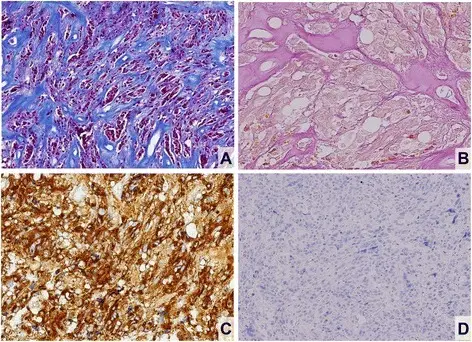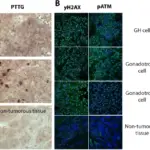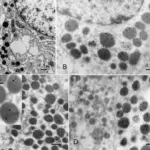Lactotroph adenomas are frequent type of hyperfunctioning pituitary adenoma, responsible for 30% of clinically known pituitary adenomas.
Associated syndromes include:
- Galactorrhea
- Infertility
- Sexual dysfunction
What is the Pathology of Lactotroph Adenomas?
The pathology of lactotroph adenomas is:
– Etiology: The cause of gonadotroph adenomas is the amalgamation of molecular genetic changes and hormonal stimulation acting as a promoter.
-Genes involved: Pituitary tumor transforming gene (PTTG), GNAS1 gene, MicroRNA-7 (miR-7).
-Pathogenesis: The sequence of events that lead to gonadotroph adenomas is as follows. Arises from monoclonal growth of pituitary lactotrophs. The mutation and activation of Gsα result in the generation of cyclic adenosine monophosphate (cAMP), a potent mitogenic stimulus for variety of endocrine cell types, hence endorsing hormone synthesis and secretion and cellular proliferation.
-Morphology: The morphology associated with gonadotroph adenomas shows that it may range in size from small termed microadenoma to large adenomas, spherical, soft, and encapsulated.
-Histology: The histology associated with lactotroph adenomas shows a dimly acidophilic or chromophobic cells.
How does Lactotroph Adenomas Present?
Patients with lactotroph adenomas typically affect more women than men present at age range of 20 and 40 years. The symptoms, features, and clinical findings associated with lactotroph adenomas include amenorrhea, galactorrhea, loss of libido, and infertility.
How is Lactotroph Adenomas Diagnosed?
Lactotroph adenomas is diagnosed through laboratory studies; serum prolactin level, retrospectively biopsy.
How is Lactotroph Adenomas Treated?
Lactotroph adenomas is treated dopamine agonists therapy, surgical interventions.
What is the Prognosis of Lactotroph Adenomas?
The prognosis of lactotroph adenomas is good symptom managed medically.



